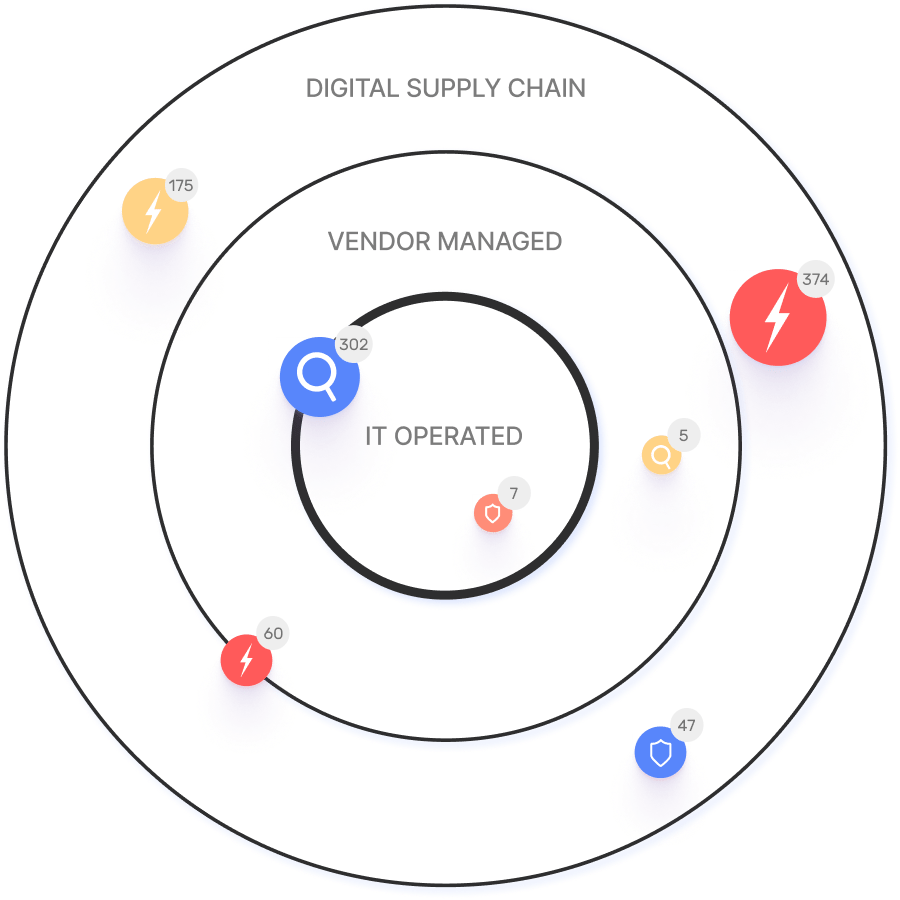Vulnerability Scanning vs. Penetration Testing: Key Differences
Companies have several options available for testing the security of their systems. Two of the most common methods are vulnerability scanning and penetration testing.
In this article
When developing a testing strategy, it’s important to understand the purpose and advantages of each of the available options. While vulnerability scanning and penetration testing will both uncover vulnerabilities in an organization’s environment, they are two very different tools designed for distinct purposes.
What is Vulnerability Scanning?
Vulnerability scanning is a type of security testing geared toward identifying known software vulnerabilities. It uses automated tools to look for the presence of software that contains known Common Vulnerabilities and Exposures (CVEs), misconfigurations, or missed updates.
Vulnerability scanning is an easy test to perform that provides an organization with visibility into common security risks, such as missed patches and out-of-date software. It produces a list of findings prioritized by severity that IT and security teams can use to address the identified issues.
What Is Penetration Testing?
In a penetration test, a team of testers simulates a real-world cyberattack against a target system. This includes performing reconnaissance, identifying and exploiting vulnerabilities, and working to achieve certain objectives, such as accessing sensitive systems or data.
The objective of these exercises is to assess the organization’s security against real-world threats. The result of the assessment is an in-depth report on the testers’ activities and the security gaps that they uncovered.
Vulnerability Scanning vs. Penetration Testing: Main Differences
Vulnerability scanning and penetration testing are both designed to uncover weaknesses in an organization’s security. However, the two techniques have several substantial differences.
Purpose
Vulnerability scans and penetration tests are performed for different purposes. The goal of a vulnerability scan is to provide insight into known vulnerabilities within an organization’s environment.
Penetration testing, on the other hand, is designed to simulate a real-world attack against an organization. The penetration tester will actually exploit vulnerabilities to assess the organization’s vulnerability to various tools and techniques.
Methodology
Vulnerability scanning relies on automated tools to identify vulnerabilities in an organization’s environment. These scans can be automated and produce lists of vulnerabilities classified based on Common Vulnerability Scoring System (CVSS) scores.
Penetration testing is a manual process in which specialists test an organization’s security. While they might use vulnerability scanners as part of their process, humans guide the assessment and exploit vulnerabilities.
Scope
Vulnerability scanning is often used to provide broad, shallow visibility into an organization’s digital attack surface. Since it relies on automated tools, it’s easy to run an assessment for an organization’s entire environment.
Penetration tests, on the other hand, are more targeted because they are human-driven and designed to emulate real-world threats. A penetration test may be focused on assessing the security of a particular part of an organization’s infrastructure or its vulnerability to a certain set of tools and techniques known to be used by a particular threat actor.
Depth of Analysis
Vulnerability scanning can be a useful tool for achieving surface-level visibility into the vulnerabilities that exist in an organization’s digital attack surface. It looks for software with known CVE records and reports their presence.
Penetration testers go much deeper when assessing an organization’s security posture. They will exploit identified vulnerabilities and chain multiple vulnerabilities together to create the attack chains that a real-world attacker would use. This provides better insight into the real risk that a vulnerability poses to the business.
Validation and False Positives
Vulnerability scanners simply look for software with known vulnerabilities. They don’t exploit the vulnerability or validate that it poses a real risk to the business. As a result, vulnerability scanners can produce false positive results if the risk posed by a vulnerability is managed by another security control, such as a web application firewall (WAF) rule.
Penetration testers exploit the vulnerabilities that they discover and use them to achieve the operational goals of the engagement. This means that the vulnerabilities included in the final report actually exist and pose a real risk to the business.
Frequency
Vulnerability scans can be fully automated with reports appearing in inboxes or ticketing systems. For this reason, they can be performed frequently, providing up-to-date information about the security risks in an organization’s systems.
Penetration tests require significantly more resources than a vulnerability scan and must be performed manually. For this reason, they are often performed periodically (e.g. annually) or in response to a significant event, such as a major upgrade or in preparation for a compliance audit.
Required Expertise
Vulnerability scanning involves running an automated tool that generates a list of identified vulnerabilities. While the tool needs to be properly configured, this requires minimal security expertise.
Penetration tests are human-driven assessments of an organization’s security. For this reason, they require security experts with deep knowledge of how to investigate, assess, and exploit an organization’s security.
Report Contents
Vulnerability scanners will produce reports containing a list of the vulnerabilities that they discovered. This often includes additional information, such as CVSS scores or a link to the associated CVE.
Penetration test ports include a detailed description of the testers’ actions on the system. This includes the steps that they took, any findings, and recommendations for remediation of identified vulnerabilities.
Optimize Vulnerability Management with IONIX ASM
Vulnerability scanning and penetration testing both have their advantages and disadvantages for an organization. Vulnerability testing offers the ability to automate scanning but offers surface-level visibility and no validation. Penetration testing provides deeper visibility and vulnerability validation but is a manual and time-consuming process, meaning that it can only be performed rarely and within a limited scope.
IONIX’s comprehensive attack surface management (ASM) solution provides organizations with the best of both worlds. Continuous monitoring from an attacker-centric perspective ensures that security teams are looking at the same threats and risks that an attacker would. Automated vulnerability validation and business-centric risk prioritization remove false positives and ensure that resources are focused on the biggest threats to the business.
To learn more about how your organization can enhance its security visibility and reduce its digital attack surface with IONIX, book a demo.


